Wireless internet, or Wi-Fi, can feel like pure magic, right? But believe it or not, there’s some fascinating science behind how those invisible signals zip around! Forget spells and potions – Think of it like shouting to a friend – but with invisible waves! Let’s peek under the hood and see how wireless signals actually travel.
Below video helps you to comprehend the concept:
The Dream Channel: Perfectly Clear
Signals 💭
Imagine you and your friend are in a totally empty, silent room. You shout, and they hear you perfectly. Crystal clear. That’s kind of like the Additive White Gaussian Noise (AWGN) channel. In this perfect scenario, the signal goes straight from you to them, no problems. It’s like the ideal Wi-Fi signal – strong and clear. We pretend this is how it works sometimes, just to keep things simple at first. Think of it as our starting point, the “dream” channel where everything is perfect!
Reality Check: Distance and Obstacles Get in the Way 🚧
Okay, back to reality. You move further away from your friend. Your shout gets quieter, right? Distance weakens signals. It’s just physics! Same with Wi-Fi. The further your device is from the router, the weaker the signal gets.
And what if there’s a wall between you and your friend? Or furniture? Or a whole crowd of people? Objects block and absorb signals. This is called attenuation. Think of it like shouting through a thick blanket. Muffled and harder to hear, right? There are different types of this signal-blocking:
- Penetration Loss: Imagine shouting through a thick wall
 . It blocks the sound a bit, no matter how far away you are. This is a constant loss.
. It blocks the sound a bit, no matter how far away you are. This is a constant loss. - Shadow Loss: Now imagine shouting behind a big tree
 . The loss can fluctuate over distances from where you stand!
. The loss can fluctuate over distances from where you stand!

All these obstacles and distance add up. They create a slow fading effect. The signal strength slowly goes up and down as you move around, mostly because of distance and big things blocking the signal.
Multipath Mayhem: Signals Bouncing Everywhere! 🤪
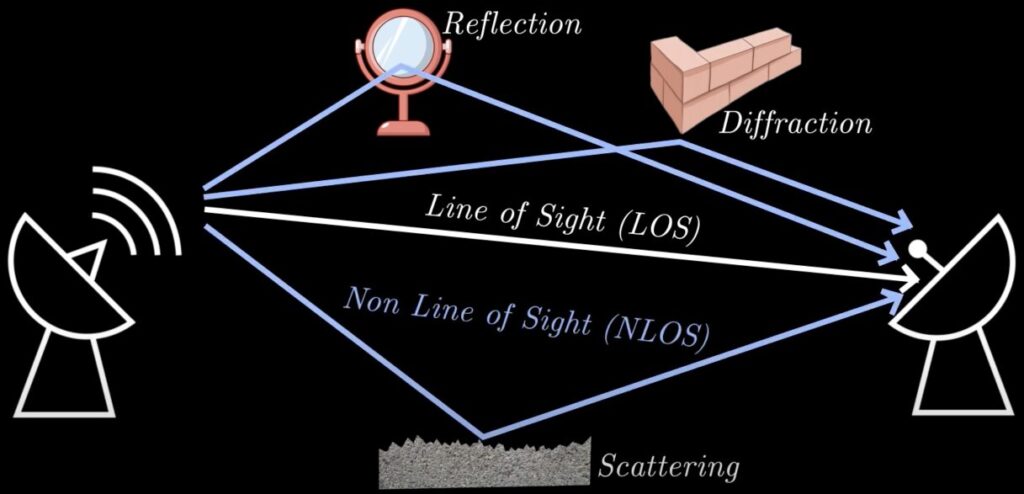
Here’s where it gets really interesting. Signals don’t just go in straight lines! They’re like bouncy balls. They reflect off walls, bend around corners (that’s diffraction!), and scatter off objects. This is multipath propagation.
Imagine your shout bouncing off everything in the room before reaching your friend. They hear your voice from many directions, slightly delayed, like echo. These signals can mess with each other. Sometimes they add up and make the signal stronger (constructive interference). Sometimes they cancel out and weaken the signal (destructive interference).
This bouncing signal chaos makes the signal strength jump around like crazy, even if you just move a tiny bit! It’s like your friend’s hearing suddenly getting better and worse as you just move around. This crazy fluctuation is called small-scale fading.
So, what does this mean for our wireless channel? It’s not just slowly fading anymore. It’s got both:
- Large-scale fading: The slow changes from distance and big obstacles.
- Small-scale fading: The rapid, jumpy changes from bouncing signals.
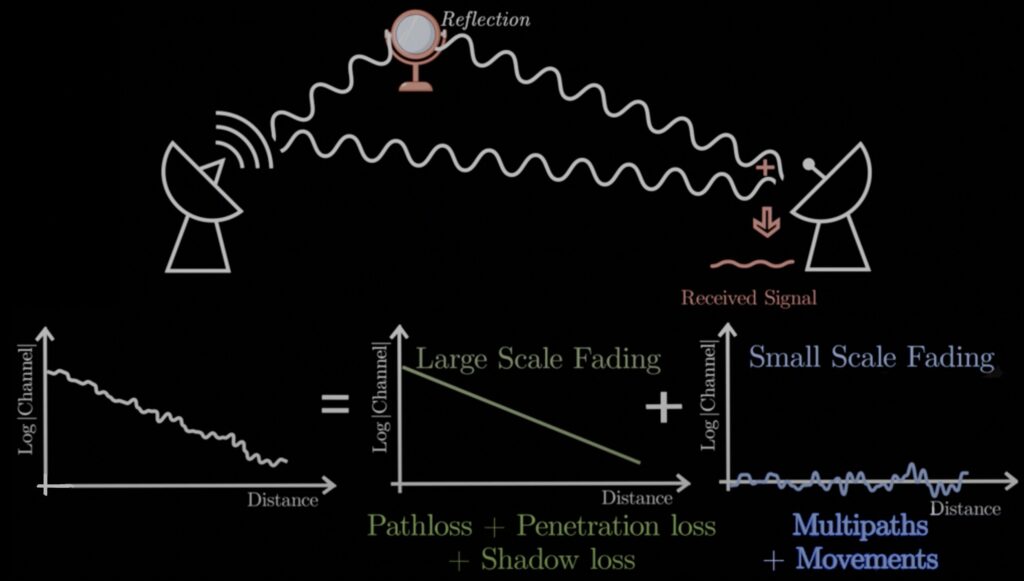
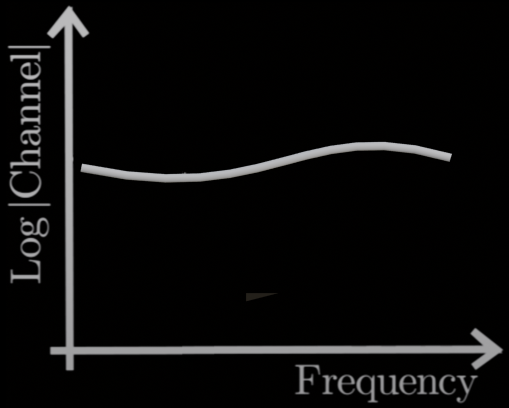
We call this kind of channel a frequency selective fading channel. “Frequency selective” because the bouncing signals can add up constructively or destructively depending upon the frequency.
Movement Mania: Everything’s Changing All the Time! 🏃♀️💨
Now, imagine everyone in the room is moving around – you, your friend, even the furniture is on wheels! The channel changes constantly. This is a time-varying channel. Try running around your home with Wi-Fi calling enabled on your phone — signals are probably going nuts!
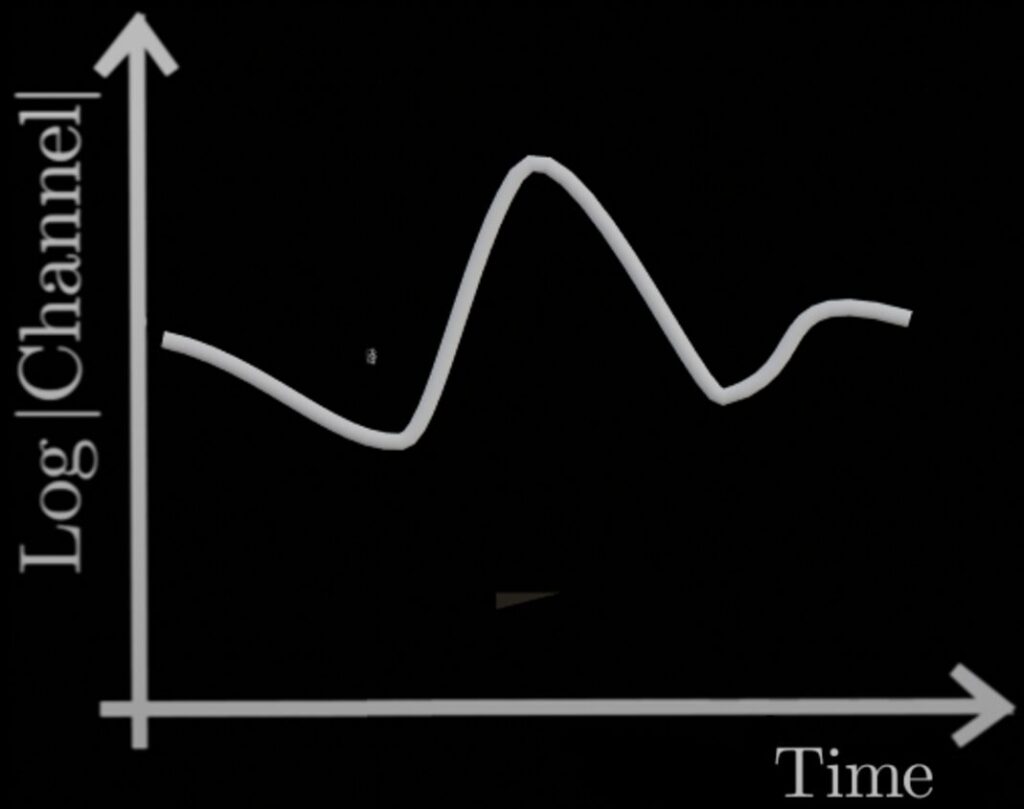
This crazy, moving, bouncing signal world is called a fast varying frequency selective fading channel. It’s the most complex, but also the most realistic!
Channel Types: A Quick Recap 🤓
To sum it up, wireless channels can be:
- Simple (AWGN): Perfect world, no changes.
- Slow Fading: Changes slowly due to distance and obstacles.
- Frequency Selective Fading: Adds frequency selectivity due to bouncing signals.
- Fast Varying Frequency Selective Fading: Adds even faster changes due to movement.
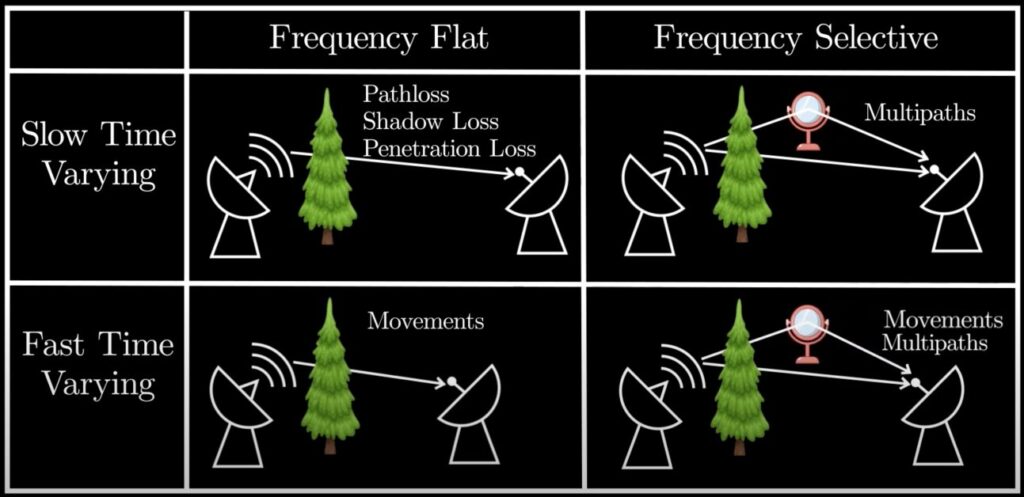
Wireless channels are definitely not simple! But understanding these basic ideas helps us build better Wi-Fi and other wireless tech. Next time your Wi-Fi acts up, remember it’s battling all these channel challenges! 😉

Leave a Reply